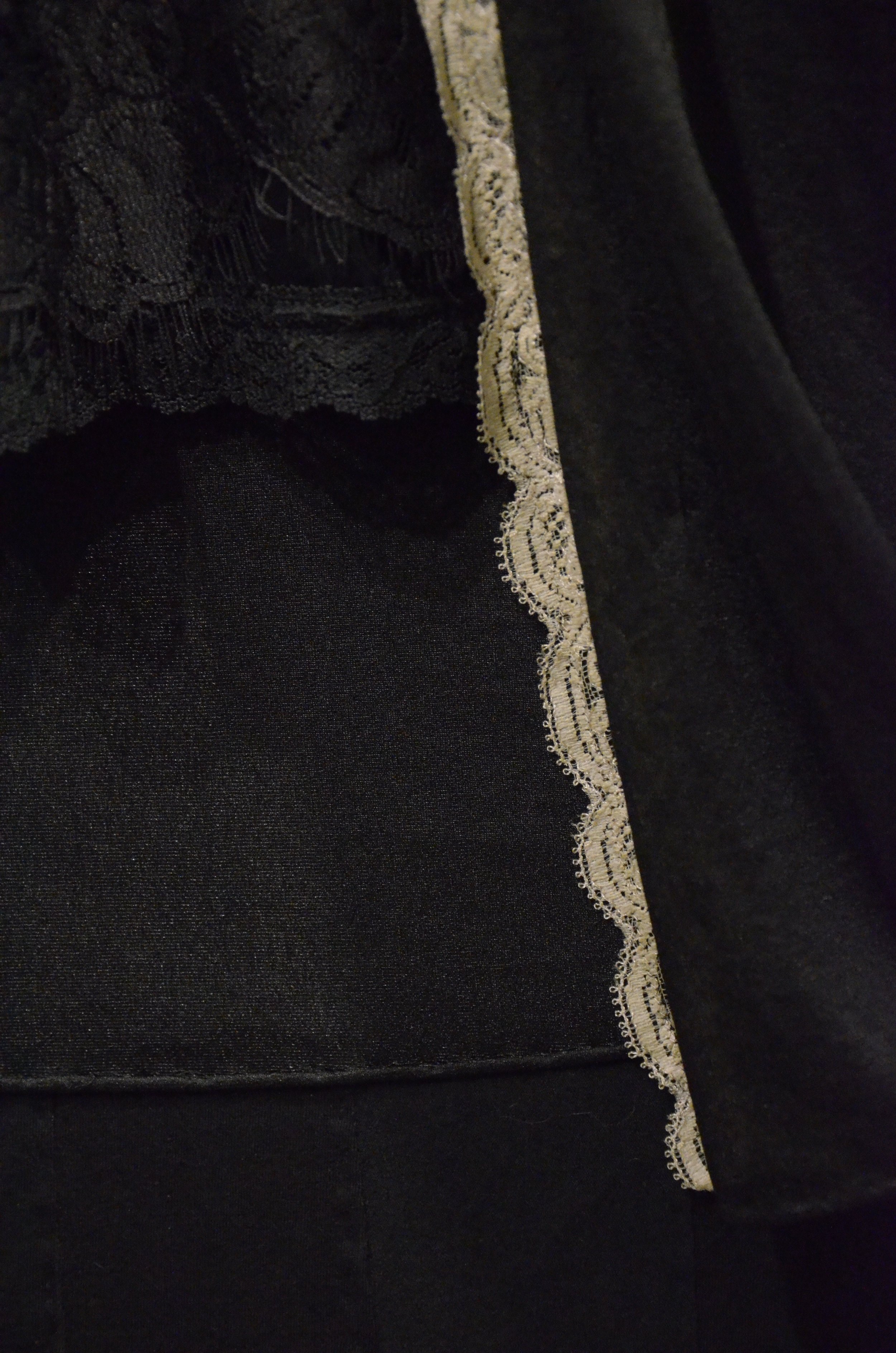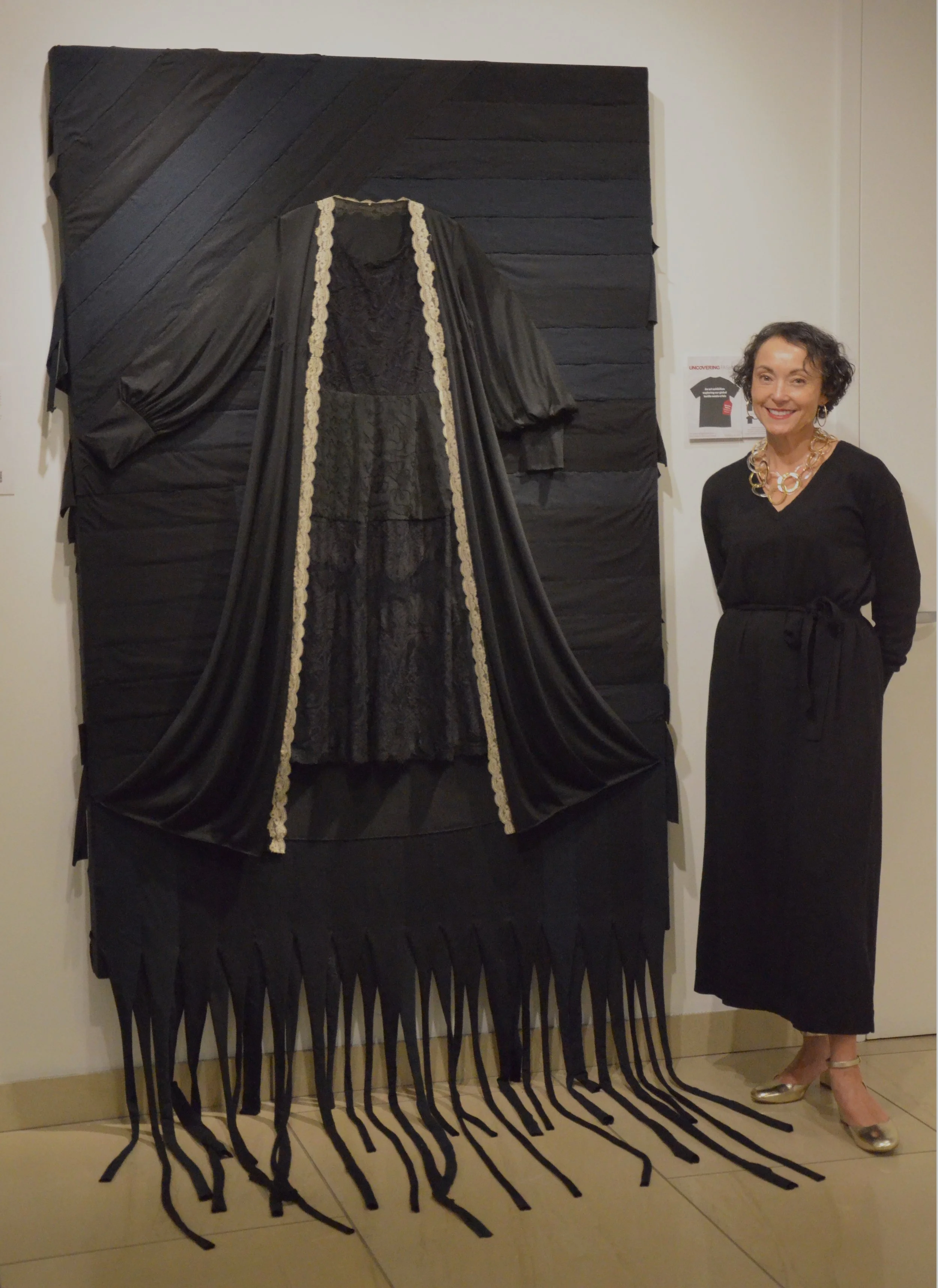
Artist Bio

Dead Dress
by Kimberly Guthrie
60” x 48”
Assorted discarded textiles (13 pounds and 15 pieces: 10 T-shirts, 3 dresses, 1 slip,1 dressing gown, pine frame)
The piece expresses a deep sentiment of mourning. The multiplicity of loss attached to current fashion practice and industry –from the loss of connection and value, to a loss of meaning– is overwhelming. The industry itself seems to have lost its way.
Dead Dress is entirely hand-sewn. Crafting the piece in this way is a performative action that places an emphasis on the connection of the garment to the making and of the making to the hand.
Guthrie’s method involved allowing the fabrics and garments to determine the composition. To create the canvas, T-shirts were cut into strips and hand-applied to a donated bed sheet. The piece is a recreation of a dress from three. Each was disassembled and then reassembled using the bodice from one dress. The base of the skirt section is a slip overlayed with the reassembled lace from the second dress and the embroidered fabric from the third thus reconnecting three garments. The piece not only symbolizes repair, but aims to call into question what we believe is worthy of repair, positing that, in fact, everything and everyone is worthy of repair. To repair is to reclaim value.
Dead Dress is a physical representation of Guthrie’s academic research centered on the global textile waste crisis and the solutions to address it. Her goal is to enable a paradigm shift, from the current take-make-waste system to a reenvisioned take-waste-make mindset and design approach.






